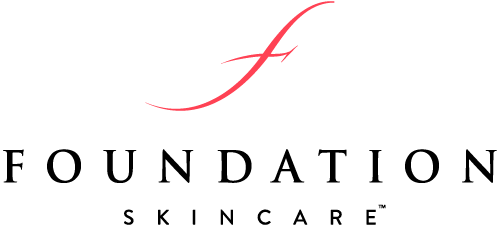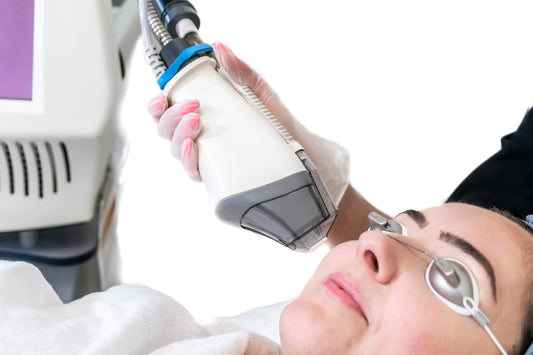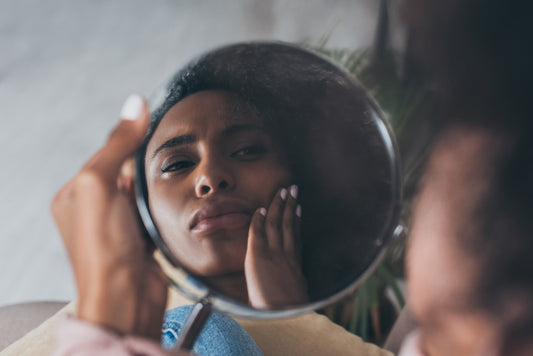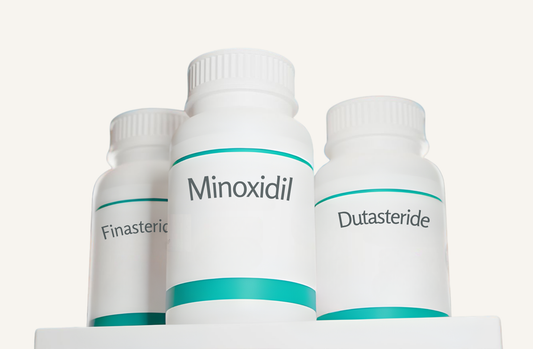Stepping out of a spa after a rejuvenating facial, you may feel like you’ve been gifted with new skin. Your skin looks refreshed and radiant after an hour of pampering. But as the scents of essential oils and the soothing ambiance of the spa fade into memory, your at-home work begins: post-facial care to prolong your new glow.
Read on to explore some expert 10 facial treatment tips to ensure your newfound radiance becomes a lasting and everyday reality. Whether you're a seasoned spa-goer or considering your very first facial, here’s how to make the most of the experience.
What is the Purpose of a Facial?
There are a number of different types of facial treatments available, but the overall aim is to promote and maintain healthy, glowing, and rejuvenated skin. This may involve exfoliation, extraction, moisturizing and more. The treatment should be tailored to your specific skin care needs, whether you are struggling with acne, dull skin, signs of aging, or another concern. Here are some of the main components to a standard facial:
- Deep cleansing: Facials begin with a thorough cleansing of the skin to remove dirt and makeup. This step helps to unclog pores and prep skin for subsequent treatments.
- Exfoliation: A gentle exfoliation process removes dead skin cells from the surface. This not only improves the skin's texture but also helps with the absorption of skincare products.
- Extraction: If necessary, the esthetician may perform extractions to remove blackheads or whiteheads. This step helps to prevent breakouts and improve the overall appearance of the skin.
- Moisturizing: Different facials may incorporate masks, serums, or lotions with specific ingredients tailored to the individual's skin type and concerns. These products provide hydration, antioxidants, and essential nutrients to the skin.
- Facial massage: A facial massage doesn’t just relax you and help to reduce stress. It also helps to improve circulation and lymphatic drainage.
- Skin analysis: Skincare professionals can assess the client's skin during a facial and provide personalized recommendations for at-home skincare routines and products.
- Anti-aging benefits: Some facials may focus on reducing the signs of aging, such as fine lines and wrinkles, by using specialized treatments like collagen masks or lasers.
When Should You Get One?
Facials are suitable for all skin types at any time of day. However, you may want to schedule it for late afternoon to allow any serums used to penetrate the skin overnight. If you have oily or sensitive skin, be sure to ask your esthetician to use ingredients that are suitable for your skin type.
While there is no hard and fast rule about how often you should get a facial, most experts agree that once per month is sufficient when it comes to standard facials. If you are opting for a more sophisticated treatment like microdermabrasion, chemical peels, and others, you should consult with the esthetician or your dermatologist depending on your skin type.
Vitamin C Lotion 20%
• Increased collagen production renews skin
• Antioxidant power repairs discoloration
10 Key Post-Facial Tips
To prolong the benefits of your facial and maintain that post-treatment glow, follow these 10 tips on facial treatment aftercare.
1. Cleansing and Moisturizing
After a facial, continue to maintain your skincare routine by cleansing your face twice daily with a gentle cleanser. Follow up with a moisturizer suitable for your skin type. This helps retain the benefits of your facial and keeps your skin hydrated. For extra moisture, we suggest using a product with hyaluronic acid, a natural humectant that attracts moisture to the skin and locks it in, improving hydration levels and boosting the skin’s ability to retain moisture.
Foundation Skincare Hyaluronic Acid Lotion moisturizes while improving the skin barrier. And it includes additional anti-inflammatory ingredients like shea butter and chamomile extracts to minimize any redness or irritation. Even more, the product layers well with other skin products, such as Foundation Skincare Vitamin C Lotion, which boasts anti-aging properties and protection from harmful UV rays.
2. Avoiding Sun Exposure
Speaking of harmful UV rays, you should always protect your skin from sun damage, but especially after a facial. Try to avoid direct sun exposure for a few days after your treatment. If you must go outside, practice sun-safe habits like wearing a broad-spectrum sunscreen with SPF 30 (50+ preferred) and a wide-brimmed hat. If you are already struggling with sun damage, such as hyperpigmentation or premature aging, try integrating some targeted products into your routine, such as niacinamide and azelaic acid. These products can potentially reverse signs of sun damage.
Foundation Skincare Niacinamide Lotion 10% offers a potent concentration of the active ingredient, which is powerful enough to help fade dark spots and brighten skin by reducing melanin deposits and enhancing DNA repair. Niacinamide also boosts collagen and keratin production to minimize fine lines and wrinkles and tighten sagging skin.
Use FS Niacinamide Lotion together with Foundation Skincare Azelaic Acid 14% Cream, which offers the highest non-prescription percentage available on the market, but is gentle enough for even the most sensitive skin. Not only does it double down on niacinamide’s ability to reduce signs of premature aging, but it also minimizes hyperpigmentation by inhibiting an enzyme known as tyrosinase.1
3. Staying Hydrated
While hyaluronic acid does a great job of hydrating your skin from the outside, don’t forget to stay hydrated from the inside. Hydration is essential for maintaining your skin's elasticity and radiance. It also helps your body flush out toxins and improves blood flow, which contributes to clearer skin.
4. Skipping Makeup (if possible)
If you can manage, plan to keep your face bare after a facial and skip the makeup. This gives your skin a chance to breathe and recover. Your pores will likely still be open and vulnerable after all the steaming and cleansing, so applying makeup may lead to irritation, clogging, or future breakouts.
5. Avoiding Harsh Products
Along with avoiding makeup, you should also try to avoid any harsh products that can irritate your skin. This includes at-home peels, and salicylic acid-based cleansers or toners. You may also want to avoid face masks, which may have ingredients intended to dry out acne or brighten skin. It’s not unusual for your skin to be sensitive after a facial and these types of products may cause redness and discomfort. Make sure to ask your facialist about any recommendations on what to avoid.
6. Gentle Skincare Routine
After a facial, be sure to follow a gentle skincare routine. In addition to using a gentle cleanser and moisturizer without fragrance, be sure to use warm water (not hot) and pat dry. If you are layering skincare products, make sure the ingredients don’t clash. Keep in mind that all of the products in the Foundation Skincare line are safe to layer.
7. Limiting Physical Activity
Physical activity is undoubtedly important for your overall health. But try not to overdo it after a facial. Intense workouts (and hot yoga!) can lead to excessive sweating, which can irritate skin or clog pores. Sweating can also remove any serums that your esthetician may have applied during the facial.
8. Protecting Your Skin
We mentioned protecting your skin from sun damage with sunscreen, but with so many options available, do you know how to choose the right one? Follow these tips to help you decide:
- Use a sunscreen with SPF 30+ (50+ preferred)
- Opt for broad-spectrum sunscreen to protect against UVA and UVB rays
- Look for a hybrid sunscreen that contains both mineral and chemical compounds
When applying sunscreen, be sure to remember less obvious areas like the neck and ears. Also don’t forget to protect your lips with a lip balm or lipstick with SPF 30 or higher.
9. Avoiding Steam and Saunas
Though your facial may have included some steaming, you should avoid any direct heat to your skin afterward, which can cause swelling and redness to your vulnerable skin. Steam rooms and saunas also make you sweat, potentially leading to those clogged pores we mentioned earlier.
10. Follow-up Appointments and Maintenance
Before you leave the spa, discuss with your esthetician when your next facial appointment should be scheduled. Regular facials will help you maintain healthy skin, but so can having an at-home routine that works. Be sure to integrate ingredients into your regimen that will target any specific concerns you have, whether you are dealing with acne, premature aging, or hyperpigmentation.
Benefits Of Consistent Facials
Monthly facials don’t just benefit your skin–they also benefit your mental health. One study found that a one-hour facial induced cerebral, cardiac, respiratory, and muscular relaxation in subjects as well as positive emotions.2 These benefits are an added bonus to the clear physical benefits to your skin:
- Cleaner skin
- Reduced signs of aging
- Exfoliated skin
- More even skin tone
- Unclogged pores
- More hydration
- A radiant complexion
- Expert guidance on skin care
Remember that everyone's skin is unique, so it's essential to follow the guidance provided by your esthetician for post-facial care tailored to your specific needs. Proper aftercare ensures that the benefits of your facial are maximized, leading to healthier, more radiant skin over time.





